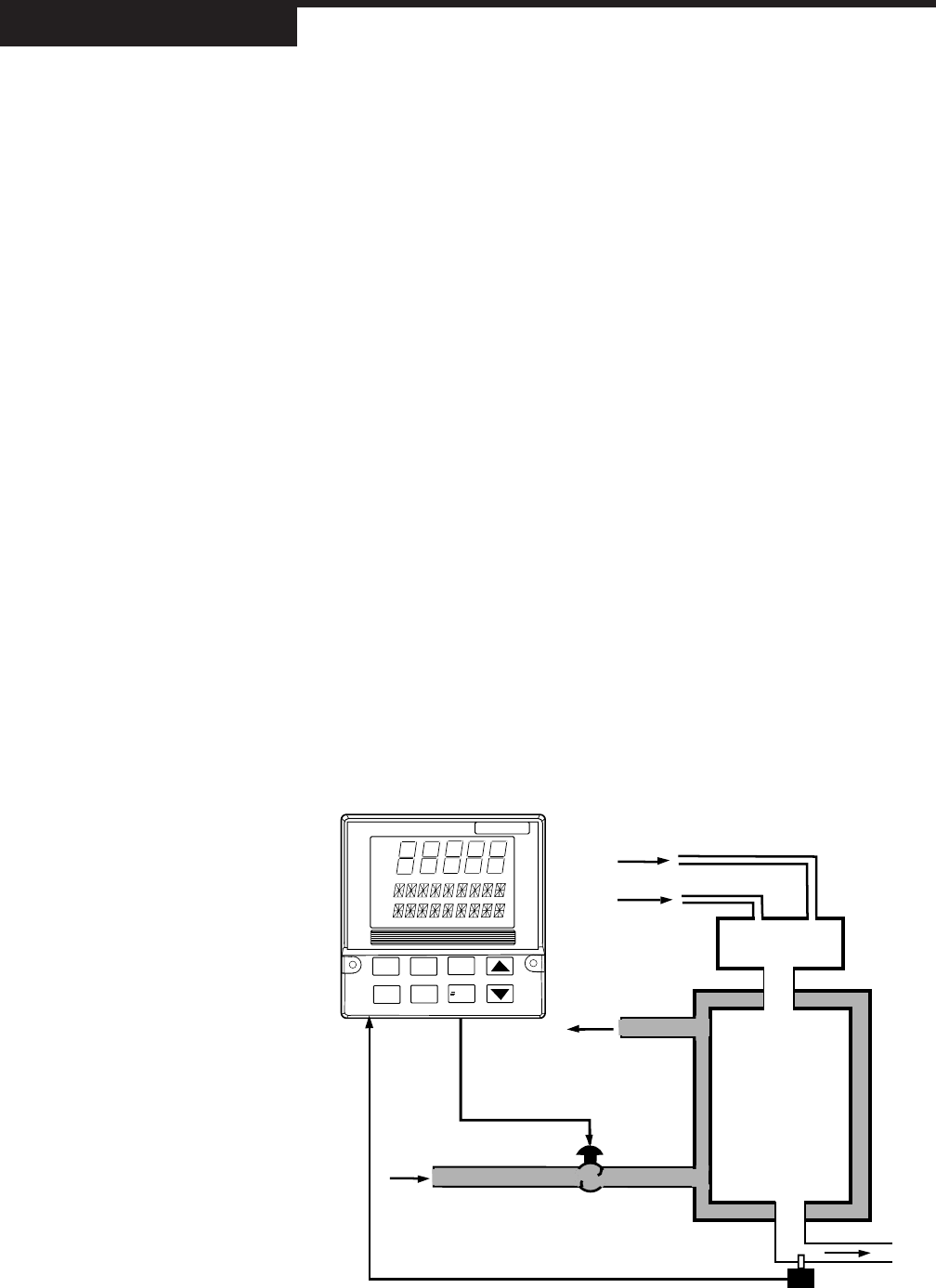User`s manual
Table Of Contents
- 535 User's Manual
- Table of Contents
- Chapter 1: Introduction
- Chapter 2: Basic Interface
- Chapter 3: Installation
- Chapter 4: Hardware Set Up
- Chapter 5: Software Configuration
- Chapter 6: Tuning
- Chapter 7: Applications
- Control Type
- Alarms
- Duplex Control
- Slidewire Position Proportioning Control
- Velocity Position Proportioning Control
- Staged Outputs
- Retransmission
- Digital Inputs
- Remote Setpoint
- Multiple Setpoints
- Multiple Sets of PID Values
- POWERBACK
- Self Tune–POWERTUNE®
- Ramp-To-Setpoint
- Input Linearization
- Load Line
- Security
- Reset Inhibition
- Process Variable Reading Correction
- Serial Communications
- Cascade Control
- Ratio Control
- Appendix 1: Menu Flowcharts
- Appendix 2: Parts List
- Appendix 3: Troubleshooting
- Appendix 4: Calibration
- Appendix 5: Specifications
- Appendix 6: Glossary
- Appendix 7: Isolation Block Diagram
- Return Procedures and Warranty Information
- 500 Series Process Controllers User's Manual

100 Chapter 7 535 User's Manual
Applications
Figure 7.19
Heat Exchanger Control Loop for
Steam Supply
raw
materials
MIXER
temperature sensor
steam
HEAT
EXCHANGER
MANUAL
DISPLAY
SET PT
FAST
MENU
ACK
535
OUT
1 2
ALM
1 2
DESIG. SP to the desired setpoint.
U. CASCADE CONTROL
While a single 535 Controller is effective in maintaining many control systems,
others require more sophisticated control schemes. Figure 7.19, shows a
sample control set up with a 535 controller. Cascade control is often used to
control a process more precisely. In cascade control, a second variable is
monitored in addition to the primary controlled variable. This second variable
is one that more quickly reflects any changes in the process environment.
Cascade control involves installing one feedback loop within another, as in
Figure 7.20. This second loop, based on steam pressure, is called the inner or
secondary feedback loop. The outer or primary feedback loop is based on the
temperature of the liquid in the heat exchanger. However, instead of directly
positioning the steam valve, the output of the primary 535 controller is now used
to adjust the setpoint of the secondary 535 controller, which then positions the
valve.
Cascade Control is typically used for the following:
• A slow responding process with a significant lag time
• A process requiring more advanced or tighter control
• A process where two PID control loops need to interact to achieve optimum
control. Cascade control is commonly implemented in temperature control
applications where the main control variable is affected by another
variable, i.e., pressure.
Example
In Figure 7.19 we have a 535 set up to control a heat exchanger. In a PID-
equipped heat exchanger, pressure in the steam shell more quickly reflects
fluctuations in the steam supply than does the process liquid’s temperature.










